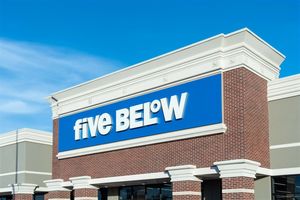- Zodasiran targets ANGPLT3, an emerging therapeutic target to treat HoFH and other dyslipidemias
- YOSEMITE Phase 3 study further enhances Arrowhead’s late-stage pipeline of RNAi-based cardiometabolic candidates
Arrowhead Pharmaceuticals, Inc. (NASDAQ: ARWR) today announced that it has dosed the first subject in the YOSEMITE Phase 3 clinical trial of zodasiran, the company’s investigational RNA interference (RNAi) therapeutic being developed as a potential treatment for homozygous familial hypercholesterolemia (HoFH), a rare genetic condition that leads to severely elevated LDL-cholesterol and early onset cardiovascular disease. Zodasiran is the fourth investigational RNAi-based candidate developed by Arrowhead to reach late-stage pivotal studies, after investigational drugs plozasiran, fazirsiran (licensed to Takeda) and olpasiran (licensed to Amgen).
“Patients living with HoFH are difficult to adequately treat and have a very high risk of developing atherosclerotic cardiovascular disease due to severely elevated LDL-C, often exceeding 500 mg/dL. As an RNAi-based therapeutic targeting ANGPTL3, investigational zodasiran has the potential to treat HoFH in a fundamentally different manner from traditional LDL-C–lowering therapies,” said James Hamilton, M.D., Chief Medical Officer and head of R&D at Arrowhead. “In Phase 2 clinical studies, patients with HoFH receiving zodasiran achieved reductions from baseline in LDL-C, ApoB, non-HDL-C, and triglycerides, supporting its potential therapeutic role for the treatment of HoFH patients.”
About Homozygous Familial Hypercholesterolemia
Homozygous Familial Hypercholesterolemia (HoFH) is an ultra-rare treatment‐resistant genetic condition characterized by elevated low density lipoprotein cholesterol (LDL-C) and early-onset cardiovascular disease. Most cases of HoFH are due to mutations in the low-density lipoprotein receptor gene (LDLR) coding for the LDL receptor (LDLR). Thus, HoFH represents a unique case where LDL-C lowering therapies not requiring functional LDL receptors may have benefit.
If left untreated, individuals with HoFH can have median LDL-C levels above 500 mg/dL (13 mmol/L), leading to early clinical manifestations of coronary artery disease1. Patients with HoFH may also have cholesterol deposits under the skin (xanthomas), around the eyes (xanthelasmas), or around the cornea (corneal arcus), but physical signs are not always present, particularly in children. HoFH remains challenging to treat and currently only patients with the more severe HoFH phenotypes get diagnosed and treated early. The estimated prevalence of HoFH globally is between 1:360,000 and 1:250,0001.
About YOSEMITE Phase 3 Study
YOSEMITE (NCT07037771) is a Phase 3 multicenter, randomized, placebo-controlled study to evaluate the efficacy and safety of zodasiran in adolescent and adult patients with genetically or clinically diagnosed homozygous familial hypercholesterolemia (HoFH) on maximally tolerated lipid lowering therapy. Approximately 60 subjects over the age of 12 will be randomized (2:1) to receive 4 doses (once every 3 months) of 200 mg zodasiran or placebo. The primary endpoint is the percent change from baseline to month 12 in fasting LDL-C. After month 12, eligible participants will be offered an opportunity to continue in an optional open-label extension.
About Zodasiran
Zodasiran, previously called ARO-ANG3, is a first-in-class investigational RNA interference (RNAi) therapeutic designed to reduce production of angiopoietin-like protein (ANGPTL3), which is a hepatocyte expressed regulator of lipid and lipoprotein metabolism with multiple potential modes of action, including inhibition of lipoprotein lipase (LPL) and endothelial lipase (EL)5,6. ANGPTL3 is an emerging therapeutic target with relevance to hypercholesterolemia, hypertriglyceridemia, and mixed hyperlipidemia. Genetic studies suggest that individuals with ANGPTL3 loss-of-function variants have enhanced lipoprotein lipase and endothelial lipase activity, resulting in lower levels of atherogenic lipoproteins and a reduced risk of ASCVD2-4.
In prior clinical studies, investigational zodasiran was associated with dose-dependent reductions in triglycerides, triglyceride rich lipoprotein remnants, and total atherogenic lipoproteins, including LDL-C, in patients with homozygous (HoFH) and heterozygous (HeFH) familial hypercholesterolemia and mixed hyperlipidemia. Zodasiran also showed a favorable safety profile. In the Phase 2 GATEWAY study in patients with HoFH, there were no drug discontinuations, drug-related serious adverse events, or deaths. The most frequent adverse events were COVID-19, nasopharyngitis, upper respiratory tract infection, and dizziness.
About Arrowhead Pharmaceuticals, Inc.
Arrowhead Pharmaceuticals, Inc. develops medicines that treat intractable diseases by silencing the genes that cause them. Using a broad portfolio of RNA chemistries and efficient modes of delivery, Arrowhead therapies trigger the RNA interference mechanism to induce rapid, deep, and durable knockdown of target genes. RNA interference, or RNAi, is a mechanism present in living cells that inhibits the expression of a specific gene, thereby affecting the production of a specific protein. Arrowhead’s RNAi-based therapeutics leverage this natural pathway of gene silencing.
For more information, please visit www.arrowheadpharma.com, or follow us on X (formerly Twitter) at @ArrowheadPharma, LinkedIn, Facebook, and Instagram. To be added to the Company's email list and receive news directly, please visit http://ir.arrowheadpharma.com/email-alerts.
Safe Harbor Statement under the Private Securities Litigation Reform Act:
This news release contains forward-looking statements within the meaning of the "safe harbor" provisions of the Private Securities Litigation Reform Act of 1995. Any statements contained in this release except for historical information may be deemed to be forward-looking statements. Without limiting the generality of the foregoing, words such as “may,” “might,” “will,” “expect,” “believe,” “anticipate,” “goal,” “endeavor,” “strive,” “hope,” “intend,” “plan,” “project,” “could,” “estimate,” “potential,” “target,” “forecast” or “continue” or the negative of these words or other variations thereof or comparable terminology are intended to identify such forward-looking statements. In addition, any statements that refer to projections of our future financial performance, trends in our business, expectations for our product pipeline or product candidates, including anticipated regulatory submissions and clinical program results, prospects or benefits of our collaborations with other companies, or other characterizations of future events or circumstances are forward-looking statements. These forward-looking statements include, but are not limited to, statements about the initiation, timing, progress and results of our preclinical studies and clinical trials, and our research and development programs; our expectations regarding regulatory approval for and commercial launch of plozasiran; our expectations regarding the potential benefits of the partnership, licensing and/or collaboration arrangements and other strategic arrangements and transactions we have entered into or may enter into in the future; our beliefs and expectations regarding milestone, royalty or other payments that could be due to or from third parties under existing agreements; and our estimates regarding future revenues, research and development expenses, capital requirements and payments to third parties. These statements are based upon our current expectations and speak only as of the date hereof. Our actual results may differ materially and adversely from those expressed in any forward-looking statements as a result of numerous factors and uncertainties, including the safety and efficacy of our product candidates, decisions of regulatory authorities and the timing thereof, the duration and impact of regulatory delays in our clinical programs, our ability to finance our operations, the likelihood and timing of the receipt of future milestone and licensing fees, the future success of our scientific studies, our ability to successfully develop and commercialize drug candidates, the timing for starting and completing clinical trials, rapid technological change in our markets, the enforcement of our intellectual property rights, and the other risks and uncertainties described in our most recent Annual Report on Form 10-K, subsequent Quarterly Reports on Form 10-Q and other documents filed with the Securities and Exchange Commission from time to time. We assume no obligation to update or revise forward-looking statements to reflect new events or circumstances.
Source: Arrowhead Pharmaceuticals, Inc.
________________
1. Cuchel, et al. Eur Heart J. 2023;44(25):2277-91
2. Dewey, et al. N Engl J Med. 2017;377 (3):211-21.
3. Minicocci, et al. J Lipid Res. 2013;54(12): 3481-90
4. Musunuru, et al. N Engl J Med. 2010; 363(23):2220-7
5. Adam, et al. J Lipid Res. 2020;61(9): 1271-86.
6. Rosenson. J Lipid Res. 2021:62:100060.
View source version on businesswire.com: https://www.businesswire.com/news/home/20250708786914/en/
As an RNAi-based therapeutic targeting ANGPTL3, investigational zodasiran has the potential to treat HoFH in a fundamentally different manner from traditional LDL-C–lowering therapies.
Contacts
Arrowhead Pharmaceuticals, Inc.
Vince Anzalone, CFA
626-304-3400
ir@arrowheadpharma.com
Investors:
LifeSci Advisors, LLC
Brian Ritchie
212-915-2578
britchie@lifesciadvisors.com
Media:
LifeSci Communications, LLC
Kendy Guarinoni, Ph.D.
724-910-9389
kguarinoni@lifescicomms.com




